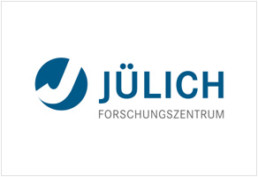Forschungszentrum Jülich operates some of the most powerful electron microscopes in Europe at the Ernst Ruska-Centre for Microscopy and Spectroscopy with Electrons (ER-C), in part together with RWTH Aachen University. The instruments not only make it possible to study the structure and composition of materials with sub-Ångstrom spatial resolution, but also to determine their local functional properties.
Such capabilities are essential for the development of innovative new materials, such as those needed for information and energy technology. In cooperation with partners from science and industry, including the Swiss company Attolight AG, a project is now underway to install ground-breaking upgrades to one of the electron microscopes in the ER-C. These upgrades are intended to allow nanoscale magnetic structures and their dynamics to be analyzed under light illumination with unprecedented spatial resolution. The project is funded through the ERC Synergy Grant “3D MAGIC” of the European Research Council. The aim of 3D MAGIC is to study still largely unknown nanoscale magnetic structures that have particle-like properties and whose existence has so far only been predicted theoretically.
A prototype ultra-high-resolution aberration corrected electron microscope was developed in the 1990s in collaboration with Jülich, and is still on site at the ER-C today. Since then, the need for ever more sophisticated analysis has driven further technical and methodological developments in Jülich, often in cooperation with industry. Another important stage is now beginning: Forschungszentrum Jülich has signed a contract with the company Attolight AG to order customized components for a unique upgrade of its Titan “Holo” microscope.
From 2022, this upgrade will enable the study of light-matter interactions with unprecedented spatial resolution. A strong focus of the project involves the study of 3D magnetic solitons, which are extremely puzzling and challenging research objects that range from a few nanometres to a few hundred nanometres in size, only occur in certain magnetic materials and offer prospects for new types of information storage for so-called neuromorphic computing – energy-efficient computing modelled on the human brain.

– Researchers are looking to study magnetic nanostructures that are termed “hopfions”.
Copyright: Forschungszentrum Jülich
At the ER-C, off-axis electron holography is being used to measure the magnetic fields of nanostructures with high spatial resolution. The technique is based on the interference of two electron beams and allows the recovery of the electron optical phase shift of the electrons. The technique provides direct and quantitative information about magnetic fields in materials on the nanometre scale. The new instrumentation aims to make it possible to apply external magnetic fields, temperature gradients and electrical currents, in combination with laser illumination, to a sample inside the electron microscope.
At the core of the upgrade is a light injection system (Mönch) manufactured by Attolight. This add-on enables light to be injected into the electron microscope by focusing a laser beam onto a specimen with a very small spot size (below 2 µm in diameter). The system offers both light injection and collection for wavelengths ranging from the ultraviolet to the infrared. In this project, the light source will be used to carry out dynamic measurements of the magnetic properties of materials in the sub-µm range.
The concept for the upgrade was developed at Forschungszentrum Jülich. Several other institutes in Jülich are involved in the project, including PGI-1, PGI-6 and the Central Institute of Engineering, Electronics and Analytics (ZEA), as well as companies that will supply lasers, special magnetic coils, sample holders and software for automation of experimental workflows. Scientists in the ER-C are among a small number of experts worldwide able to image magnetic structures that are just a few nanometres in size. Attolight is extremely proud to participate in the upgrade of the Titan Holo microscope in Jülich and to contribute to the achievement of new breakthroughs in the field of magnetic imaging.

The Titan Holo microscope at Forschungszentrum Jülich stands taller than an average person. From 2022 onwards, after the planned upgrades, it will be possible to apply local magnetic fields, electrical currents and optical stimuli in this microscope to study the magnetic properties of nanoscale materials at cryogenic temperatures.
Copyright: Forschungszentrum Jülich
Further information:
Press release from Forschungszentrum Jülich “ERC Synergy Grant: 12 Million Euros for research into “magic” 3D nanostructures” from 11.10.2019

